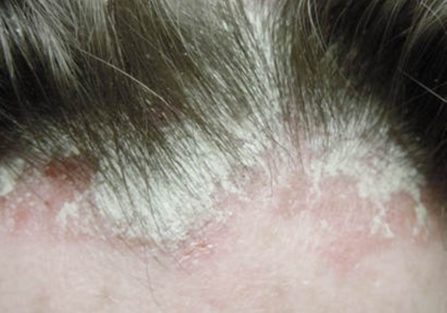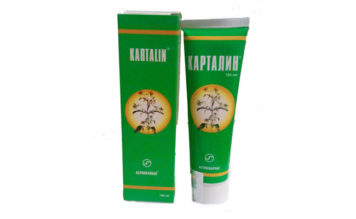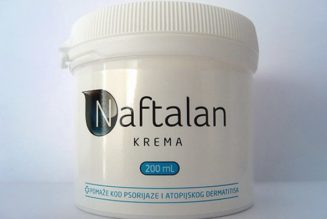Psoriasis is an autoimmune disease of non-infectious etiology, which is manifested by a pronounced reaction of the skin in the form of inflammation, redness and peeling. During the disease, periods of exacerbations and remissions are noted. A big problem is psoriasis on the face, which causes patients not only physical suffering, but also psychological discomfort.
Material Content:
Causes of psoriasis on the face
Most often, scaly lichen affects the skin in the elbow and knee bends, axillary and inguinal cavities, neck and scalp. But in some cases, the disease may appear on the face. Pathology is chronic systemic in nature, exerting a negative effect on internal organs.
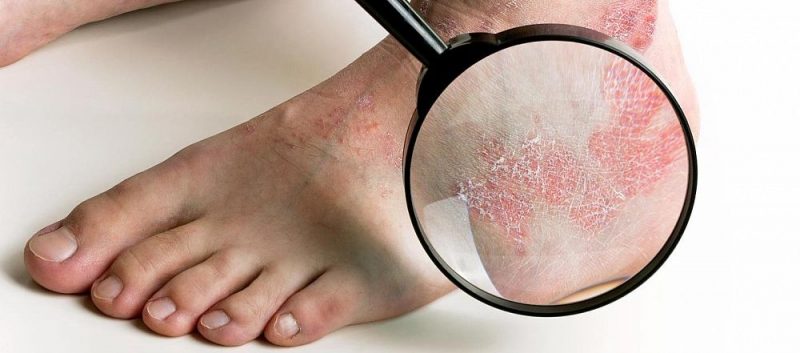 The causes of psoriasis, that is, the detected primary changes in the skin cells, are not fully understood, despite the fact that the pathology, in its manifestation, has been well studied.
The causes of psoriasis, that is, the detected primary changes in the skin cells, are not fully understood, despite the fact that the pathology, in its manifestation, has been well studied.
Experts believe that the etiology of the onset of the disease are:
- malfunction of the body's immune system;
- genetic predisposition;
- chronic stress;
- pathology of the endocrine system;
- violation of metabolic processes;
- prolonged and uncontrolled intake of certain medications;
- chronic inflammatory pathologies of internal organs.
Any reason or their combination leads to the appearance of scaly formations on the face that are not contagious and are not transmitted by contact to a healthy person.
Symptoms and signs of the disease
Psoriasis passes through several stages in its development, a characteristic feature of which are the specific manifestations of the disease.Of all its types, pathology on the face manifests itself most often in seborrheic form.
The debut of skin lesions begins with an initial or progressive stage of the disease, characterized by the following symptoms:
- the formation of red spots on the face, occupying small areas of the skin;
- the appearance of papules, formed from enlarged small, up to 3 mm in diameter, dense rashes;
- the growth of the focus of inflammation with the formation of dry plaques, covered with silver or yellow scales;
- peeling of the skin in places of its manifestation;
- severe itching.
Gradually, the plaques begin to merge, and the area of damage on the skin of the face becomes significant. Rashes are most often localized on the wings of the nose, in the place of the nasolabial triangle. Progressing, the process spreads to the frontal and temporal regions, auricles, neck.
Often, the initial symptoms of psoriasis on the face are similar to allergic skin irritations. If at this stage of the development of the disease treatment is not carried out or therapeutic measures are incorrect, the pathology quickly spreads to healthy areas of the skin.
The progressing stage, having reached a maximum in its development, passes into the next stationary phase, which proceeds in the relative stability of the process. At this stage, the following symptoms are observed:
- no formation of new papules;
- itching in the affected area becomes less intense;
- peeling of elements is markedly reduced.
With the extinction of the pathological process, the disease goes into the regressing stage of its development with the following clinical manifestations:
- exfoliation of elements is completely stopped;
- skin itching in the lesions is practically absent;
- the inflammatory process regresses with separation from the plaque of the crusts, leaving behind a spot of light pink color.
The disease enters the stage of remission, which, depending on the period of treatment initiation and its quality, may remain for a long time.
Diagnostic measures
Diagnosis of psoriasis on the face is carried out taking into account the anamnesis of the occurrence of the pathological process, objective data and the presence of concomitant diseases. A characteristic feature of the disease is the presence of a triad, which can be monitored by an objective examination of the affected areas of the face.
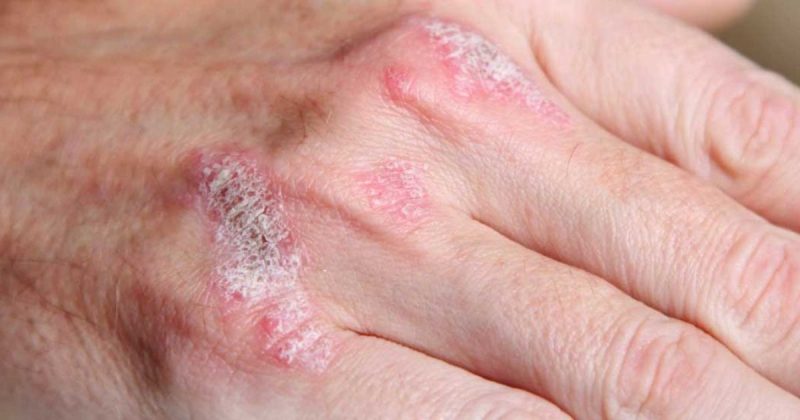 It manifests itself as follows:
It manifests itself as follows:
- a symptom of a stearin spot - when scraping the scales from the surface of the affected area, which are easily peeled off;
- a symptom of film formation - after complete removal of the scales, a smooth glossy red surface is exposed under them;
- symptom of "blood dew" - when the film is damaged on its surface, spotted blood discharge appears.
If the process is in the resolution stage, then a clear, light border forms between the edge of the spot and the healthy tissues (Voronov’s symptom). The diagnosis of psoriasis can also be confirmed by a certain condition of healthy skin of the patient’s face, when minor violations of its integrity lead to the appearance of red spots in this place (Kebner phenomenon).
In addition to objective diagnosis, laboratory tests are prescribed:
- clinical examination of blood and urine;
- blood biochemistry;
- microscopic examination of flakes obtained by scraping from skin lesions;
- histological analysis of the biopsy of the pathological lesion.
In most cases, objective diagnosis and laboratory testing are sufficient for making a diagnosis. Instrumental diagnostic methods are prescribed only according to indications during the development of complications.
Methods for treating psoriasis on the skin of the face
Early detection of pathology allows you to start the necessary activities that give a positive effect in order to prevent the progression of the disease, transferring it to the phase of the resolution process.
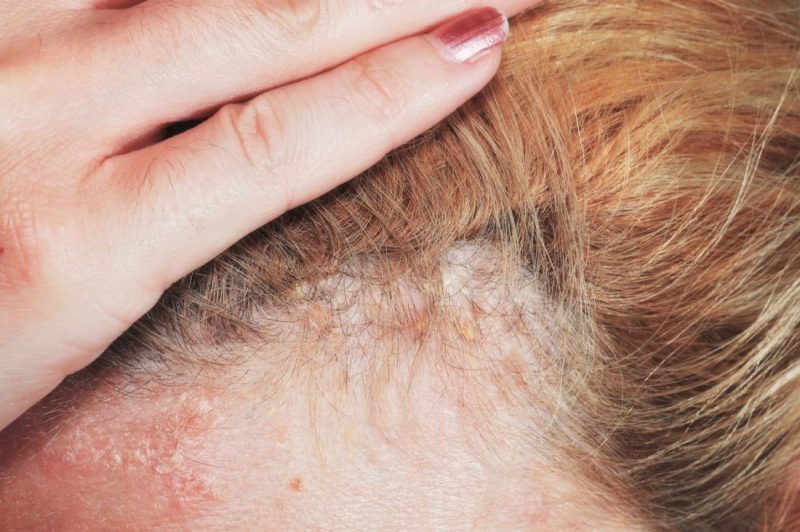 Treatment of psoriasis on the face is carried out comprehensively, taking into account not only its external manifestations, but also internal factors that could provoke the onset of a pathological process on the face. The course of treatment, the type of medication and its duration are determined only on the recommendation of a specialist.
Treatment of psoriasis on the face is carried out comprehensively, taking into account not only its external manifestations, but also internal factors that could provoke the onset of a pathological process on the face. The course of treatment, the type of medication and its duration are determined only on the recommendation of a specialist.
Therapy of pathological elements on the face consists of external treatment and internal use of medicines according to indications.
Face cleaning with pharmaceutical preparations
Conducted therapy requires the strict implementation of all the doctor's instructions. First of all, it is necessary to exclude the use of effective cosmetics to mask damaged skin areas. Therapy of the existing process consists of the external use of various ointments, solutions, creams that are available in the pharmacy network.
The most effective means that give a positive result in resolving the pathological process on the face are:
- salicylic ointment - a medicine contributes to the active softening of pathological formations with their subsequent removal. It gives a good drying and antiseptic result;
- naphthalan ointment - has a positive analgesic and antiseptic effect, promotes the regeneration of damaged skin. The tool actively eliminates skin itching. It gives an effective result in acute manifestations of seborrheic psoriasis on the face;
- Kartalin ointment is a plant-based drug that has a pronounced anti-inflammatory and regenerative effect;
- diprosalik is an ointment or solution for external use, has an anti-inflammatory, bacteriostatic effect, and also has the ability to relieve itchy skin well.
As additional funds in the treatment of psoriasis on the face, drugs are prescribed that contribute to the strengthening of basic external medicines, which include:
- shark fat cream - gives a positive result, stopping peeling and itching in the affected areas of the skin;
- Tsinokap cream - eliminates the inflammatory process, has an antibacterial property, relieves annoying itching;
- cream-balm Cytopsora - actively removes psoriatic plaques, contributing to their exfoliation, and also regenerates the affected areas of the skin of the face.
In some cases, with severe manifestations of the disease, hormonal ointments are used, but strictly according to the indications and the prescription of the doctor, since these medicines have side effects. These include the following:
- Betamethasone;
- Celederm;
- Hydrocortisone;
- Elokom.
What kind of drug for external use will stop the manifestations of psoriasis, only a doctor determines. Self-medication of this pathology is unacceptable.
Important! Any rashes on the face require the mandatory consultation of a dermatologist, especially if there is a tendency of the body to allergic reactions or there are relatives with psoriasis in the family.
Folk remedies
To complement the treatment of the disease, you can use traditional medicine. The combination of herbal and medical preparations gives a good result in terms of cleansing the skin of the face from pathological formations.
The most popular recipes for traditional medicine are:
- rubbing the lesions with freshly squeezed aloe juice and celandine;
- lubrication of plaques with sea buckthorn oil;
- lotions from birch tar with vegetable oil in a ratio of 1: 1;
- lotions from a decoction of sea buckthorn bark or barley seed.
The use of such a technique is also permitted only on the recommendation of a dermatologist, taking into account the individual characteristics of the patient's body.
Possible complications and consequences
The lack of treatment for psoriasis or its inadequate therapy is dangerous with complications and consequences. The pathological process can acquire a more severe course, that is, have a tendency to spread to the most extensive parts of the face with localization on the skin of the eyelids and around the eyes.
With this pathology of the disease, the inflammatory process of the choroid of the eye is possible, as a result of which a red rim forms around the pupil. Such a complicated process is characterized by photophobia, lacrimation, pain and pain in the eyes, lack of clarity of vision. Progression of the disease can lead to loss of vision if help is not provided.
Prevention
Preventive measures are aimed at preventing a disease or exacerbation of a pathological process. A prerequisite is compliance with the following recommendations of a specialist:
- diet correction with the use of an increased amount of vegetables and fruits;
- rejection of bad habits;
- compliance with the regime of the day and rest;
- exclusion of contact with various allergens;
- if possible, elimination of stressful situations;
- gentle facial skin care;
- the use of sunscreen in summer, and in winter, special oily creams;
- men are shown using an electric razor.
Compliance with preventive measures and the implementation of all the doctor's recommendations will prevent the exacerbation and spread of existing psoriasis on the face, as well as increase the duration of remission of the disease.


